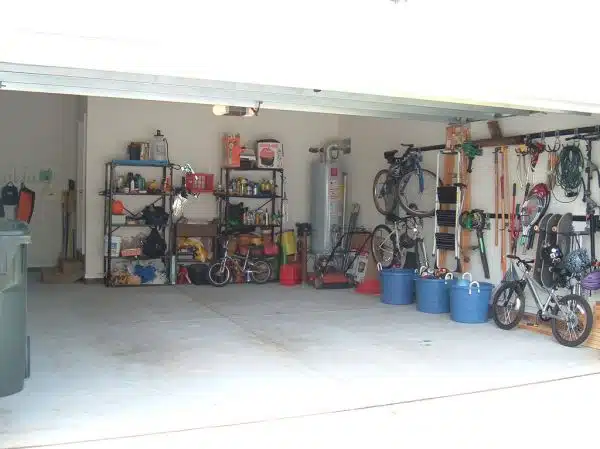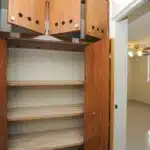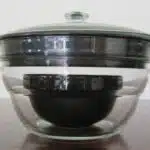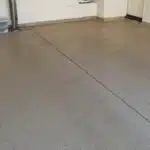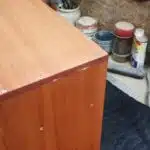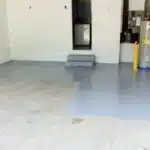Organizing a garage can be a daunting task for many homeowners. With piles of clutter, tools, sports equipment, and seasonal decorations, it can quickly become overwhelming to find a place for everything. However, with the right approach and mindset, organizing your garage can be a manageable and even enjoyable project.
As a professional organizer, I have helped countless clients transform their garages from chaos to order. In this article, I will outline five essential steps that you can take to organize your garage efficiently. By following these steps, you will be able to create more space, reduce stress, and increase productivity in your home. So let’s get started!
Assessing Your Needs And Goals
Before diving into the task of organizing your garage, it is important to take the time to assess your needs and goals. Start by taking a step back and examining the current state of your garage. Ask yourself what you hope to achieve with this organization project. Do you want more space for parking your car? Or are you hoping to create a functional workspace for DIY projects? Understanding your goals will help determine how much storage space is needed and where it should be located.
Next, assess the amount of storage currently available in your garage. Take inventory of all items that need to be stored, including tools, sports equipment, and seasonal decorations. This will give you a better idea of what kind of storage solutions will work best for your needs. Consider using wall-mounted shelving or overhead racks for items that are used less frequently, while keeping frequently used items within easy reach.
Finally, think about how you can make the most of your garage space. Consider adding hooks or pegboards for smaller items like gardening tools or extension cords. Think about rearranging larger items like lawn mowers or bicycles to maximize space efficiency. With careful assessment and planning, you can create a functional and organized garage that meets all of your needs.
Transition: Once you have assessed your storage needs and set achievable goals, it’s time to create a plan of action to turn those goals into a reality.
Creating A Plan Of Action
As you assess your needs and goals for organizing your garage, it’s important to keep in mind the ultimate objective: creating a functional space that serves your needs. This might include maximizing storage space, making room for vehicles, or creating a workspace for hobbies and projects. To achieve these objectives, it’s important to approach the task with clarity and intention.
The first step in creating a plan of action is brainstorming strategies that will work best for your unique situation. This might involve considering the types of items you need to store, how frequently you access them, and what types of storage solutions will work best. You might also consider whether you need to create specific zones within the garage, such as a gardening zone or sports equipment zone.
Once you’ve identified your goals and brainstormed potential strategies, it’s time to set specific goals for organizing your garage. This might involve setting deadlines for completing certain tasks or establishing clear guidelines for what should be stored where. By setting tangible goals and benchmarks, you’ll be able to measure progress and stay motivated throughout the process of clearing out the clutter and transforming your garage into a functional space that meets all of your needs.
Clearing Out The Clutter
Before you can start organizing your garage, it’s important to declutter and get rid of any unnecessary items. This will make the process of organizing easier and more effective in the long run. To begin, set aside some time to go through everything in your garage and decide what to keep, donate, sell or toss out. It may seem overwhelming at first, but taking it one section at a time can make the task more manageable.
Tips for Decluttering:
- Start with a plan – Decide which sections of your garage you want to tackle first.
- Take everything out – Remove all items from each section before deciding where they should go.
- Be ruthless – Don’t hold onto anything that you haven’t used in over a year or that no longer serves a purpose.
- Group similar items together – This will help you see how much of each item you have and make it easier to organize them later.
Benefits of Minimalism:
Decluttering and adopting a minimalist mindset has numerous benefits beyond just an organized garage. By simplifying your life and getting rid of excess belongings, you can reduce stress levels, save time by not having to constantly clean and organize cluttered spaces, increase productivity by having fewer distractions and improve mental health by creating a sense of calmness in your surroundings.
By following these tips for decluttering and embracing minimalism, you’ll be on your way to creating a more organized and stress-free environment in your garage (and beyond). Once you’ve cleared out the clutter, the next step is sorting through your belongings to decide what stays and what goes.
Sorting Your Belongings
After clearing out the clutter, it’s time to sort your belongings. This process involves categorizing your items and deciding what to keep, donate, or throw away. It’s important to remember that organization is not just about tidying up; it’s about creating a functional space that suits your needs.
Decluttering tips can make this process easier. Start by creating piles of similar items and grouping them together. Then, evaluate each item and decide whether you use it regularly or if it has sentimental value. If an item doesn’t fit into either category, consider donating it to someone who could use it more than you.
Donating options are available for almost everything these days, from clothing to furniture to electronics. Research local charities in your area and find out what they accept. Some organizations will even come to your house to pick up larger items like sofas or mattresses. Remember that donating not only helps others in need but also keeps usable items out of landfills, making it an environmentally responsible choice. With these tips in mind, you’ll be on your way to a well-organized garage in no time!
Categorizing Your Items
Once you have emptied your garage, it’s time to categorize the items. Grouping similar things together will help you identify what you need and how much storage space you require. Start by creating four categories: keep, donate/sell, recycle, and trash. Be honest with yourself about what you really need and use regularly. If something has been gathering dust for years, it’s time to let go.
Once you’ve sorted everything into categories, tackle each pile separately. For the “keep” pile, consider if there are any DIY storage solutions that could make better use of the space in your garage. Utilize vertical space by adding shelves or pegboards to hang tools and equipment. For larger items like bikes or lawn mowers, consider installing hooks or pulleys to lift them off the ground.
When decluttering techniques have been applied to each category, start disposing of items that are no longer needed. Donate or sell anything in good condition that could be useful for someone else. Recycle materials such as cardboard boxes or old paint cans if possible. Only throw away things that cannot be donated or recycled. Once everything has been taken care of, it’s time to move on to determining storage solutions that work best for your needs.
Transition: With a clear idea of what is worth keeping and storing in your garage, it’s time to explore different options for organizing those items efficiently and effectively without sacrificing valuable space- this can be done by determining appropriate storage solutions for your garage needs.
Determining Storage Solutions
After categorizing the items in your garage, it’s time to determine the storage solutions. This is an important step because it will help you maximize the space you have and keep everything organized. Before jumping into buying storage solutions, there are a few factors you should consider.
First, decide whether you want to go DIY or hire a professional organizer. DIY organizing can be cost-effective but can take up more of your time and energy. On the other hand, hiring a professional organizer can save you time and effort but can be costly. Second, consider your budget for storage solutions. There are many options available at different price points, from simple shelves to high-end cabinets. Lastly, factor in the long-term cost of maintenance and upkeep for each solution.
Once you’ve considered these factors, it’s time to choose the right storage solutions for your garage. Here are some options that can help maximize your space:
- Wall-mounted shelving: This option is great for storing items off the floor and freeing up valuable ground space.
- Overhead storage: Installing overhead storage racks or bins is an excellent way to utilize vertical space in your garage.
- Cabinets: Cabinets offer both style and functionality while keeping clutter out of sight.
When deciding on which storage solutions to use in your garage, take into account your specific needs and goals for organizing the space. With careful consideration of DIY vs. Professional options, budget, and cost, finding the perfect solution should be easier than ever before! In our next section, we’ll delve deeper into maximizing vertical space in your garage without sacrificing aesthetics or function.
Maximizing Vertical Space
In order to make the most out of your garage’s limited space, it’s important to utilize all the vertical space available. This means taking advantage of the walls and ceiling by installing DIY storage solutions that allow you to store items up high. Hanging solutions are a great way to maximize vertical space in your garage. These can include hooks, racks or shelves that can be mounted on walls or from ceilings.
One type of hanging solution is overhead storage systems. These allow you to store large and bulky items such as sporting equipment, seasonal decorations or luggage up high, freeing up valuable floor space below. Overhead storage systems can be installed using materials like metal brackets or wood beams, depending on the weight of the items being stored.
Another hanging solution is pegboards. Pegboards are versatile and easy to install, making them a popular choice for DIY enthusiasts. They come in different sizes and can be mounted directly onto walls or attached to cabinets and workbenches. Pegboards provide a convenient way to hang tools, gardening supplies and other small items, keeping them off the ground and within easy reach.
By incorporating hanging solutions into your garage organization plan, you’ll save valuable floor space while maximizing the use of your vertical wall and ceiling spaces. In addition to overhead storage systems and pegboards, there are many other creative ways you can utilize wall storage in your garage. Let’s take a look at some additional ideas for optimizing space in your garage in our next section.
Utilizing Wall Storage
In the previous section, we discussed maximizing vertical space in a garage. This is an essential step in organizing your garage because it opens up a lot of floor space for other items. However, vertical storage alone may not be enough to keep your garage organized and clutter-free. One way to take things further is by utilizing wall storage.
There are many benefits of wall storage in garages. First off, it helps you declutter your floor space and frees up room for bigger items such as cars or workbenches. Secondly, it allows you to display your tools and equipment neatly on the walls, making them easier to find and access when needed. Finally, DIY wall storage ideas can be fun and creative projects that showcase your personality while solving storage problems.
When implementing shelving and cabinets for your wall storage needs, it’s essential to keep in mind their functionality and accessibility. Consider what you want to store on them and how often you’ll need to access those items. For example, if you’re storing heavy power tools, make sure the shelves or cabinets are sturdy enough to hold their weight securely.
Now that we’ve covered the benefits of wall storage in garages let’s move on to step three: implementing shelving and cabinets. By doing this, we can take advantage of underutilized spaces in our garages while keeping our belongings organized and easily accessible.
Implementing Shelving And Cabinets
When it comes to organizing a garage, shelving and cabinets are essential. They provide ample space for storage and help keep everything in order. One of the first decisions you’ll need to make is whether to install shelving and cabinets yourself or hire a professional. DIY installation can save you money, but it’s important to weigh the cost comparison against the time and effort required.
Once you’ve decided on DIY vs professional installation, it’s time to choose the right materials for your shelving and cabinets. There are many options available, including wood, metal, and plastic. Each material has its own advantages and disadvantages, so it’s important to consider factors such as durability, weight capacity, and ease of maintenance. You’ll also need to think about the style of your garage and choose materials that complement its overall aesthetic.
In summary, implementing shelving and cabinets in your garage is a crucial step towards achieving an organized space. Whether you opt for DIY or professional installation depends on your budget and level of expertise. Additionally, choosing the right materials is key to ensuring that your shelves and cabinets are both functional and visually appealing. In the next section, we’ll discuss how labeling and organizing containers can take your garage organization to the next level.
Labeling And Organizing Containers
One of the most important parts of labeling and organizing containers is correctly identifying the items you want to store and categorizing them into appropriate boxes, bins, and shelves. Additionally, labels can be used to aid in efficient supply tracking and space planning. An effective way of visualizing how to best utilize the space is through decluttering, which helps to maximize the storage spaces. Finally, when all of these steps are taken into consideration, organizing the containers is a simple process that can be done with ease.
Labelling
Are you tired of searching through piles of unmarked containers every time you need something from your garage? The solution to this problem is simple: labelling. By labelling every container and item in your garage, you can easily find what you need without wasting time or becoming frustrated.
The benefits of labelling cannot be overstated. Not only does it save time and reduce frustration, but it also helps keep your garage organized in the long run. With effective labelling, you can sort items by category or project, making it easier to find them when needed. Additionally, labelling can help prevent accidents by clearly indicating hazardous materials or tools.
To effectively label your containers, there are a few tips to keep in mind. First, use clear and concise labels that are easy to read from a distance. Second, consider using color coding to distinguish different categories of items or projects. Third, make sure to label both the lid and side of the container for easy identification regardless of its placement.
Labelling may seem like a small task, but it can make a huge difference in the functionality and organization of your garage. By taking the time to label each container properly, you’ll save yourself time and energy in the long run while creating a safer environment for yourself and others who may enter your space.
Containers
When it comes to organizing your garage, containers are essential. Not all containers are created equal, and choosing the right type of container can make a huge difference in the effectiveness of your organization system. There are several types of containers available, including plastic bins, cardboard boxes, and metal storage units. Each material has its pros and cons, so it’s important to consider your specific needs before making a decision.
Plastic bins are a popular choice for organizing garages. They come in various sizes and shapes and can be stacked easily. Plastic bins are also durable and can withstand harsh weather conditions if stored outside. The downside is that they can be more expensive than other options and may not be environmentally friendly.
Cardboard boxes are an affordable option for organizing your garage, but they aren’t as durable as plastic or metal containers. They’re best used for items that don’t require frequent access or heavy-duty protection. Cardboard boxes also have the added benefit of being recyclable.
Metal storage units offer durability and security but can be expensive compared to other options. They’re often used for storing valuable items like power tools or expensive equipment because they provide added protection against damage or theft.
In conclusion, choosing the right type of container is crucial when organizing your garage. While each material has its own advantages and disadvantages, it’s important to consider factors like durability, cost, and environmental impact before making a decision. By selecting the appropriate container for each item you need to store, you’ll ensure that your garage remains organized and functional for years to come.
Creating Zones For Different Categories
Labeling and organizing containers is a great start to creating an organized garage. However, it’s important to take it one step further by creating zones for different categories of items. This will not only make it easier to find what you need, but also help keep the garage clutter-free.
To create zones, start by grouping similar items together. For example, all gardening tools should be placed in one zone, while sports equipment should be placed in another. Once you have identified the different zones, assign each one a specific location within the garage. This will help ensure that everything has a designated spot and is easy to find when needed.
In addition to creating zones, consider incorporating DIY storage solutions to maximize space and keep items easily accessible. This can include installing shelves or cabinets along the walls or using pegboards to hang tools and other equipment. By utilizing every inch of space effectively, you’ll be able to create functional spaces that are both practical and aesthetically pleasing.
Now that you have created an organized and functional space in your garage, it’s important to maintain it by regularly cleaning and decluttering. Make it a habit to go through your items periodically and donate or discard anything that is no longer needed or used. Keeping your garage clutter-free will not only make it easier to find what you need but also prevent unnecessary stress and frustration when trying to navigate through piles of unwanted items.
Cleaning And Maintaining Your Garage
Keeping your garage clean and well-maintained is essential to maintaining an organized space. Here are some tips for deep cleaning your garage. First, remove everything from the garage and sort it into piles of items to keep, donate or sell, and throw away. Next, sweep or vacuum the floors thoroughly and wipe down any surfaces with a damp cloth.
As you put everything back in the garage, be sure to use storage solutions that work for your needs and maximize the available space. Consider using shelves, hooks, and cabinets to keep items off the floor and create more room for larger items such as bicycles or lawn equipment. Labeling storage containers can also help you quickly find what you’re looking for.
In addition to deep cleaning your garage, it’s important to implement strategies for preventing clutter buildup in the future. One way to do this is by regularly going through your belongings and getting rid of anything that no longer serves a purpose. You can also make a habit of putting things away immediately after using them and avoiding storing items on the floor whenever possible. With these techniques in place, you’ll be able to maintain a tidy and functional space year-round.
Preparing your seasonal items for storage is an important step in keeping your garage organized. By following these simple steps, you can ensure that everything stays in good condition until it’s needed again next year.
Storing Seasonal Items
As the seasons change, so do the items we need to access in our garage. During the off season, it can be challenging to find ways to store seasonal items efficiently and effectively. To start organizing your garage, you must first decide which items are considered “seasonal” and which ones are used year-round.
Once you have identified the seasonal items, consider using vertical space to store them. Shelving units or hooks mounted on walls can provide ample storage space for out-of-season items that would otherwise take up valuable floor space. Additionally, utilizing clear plastic bins with labels can help you easily identify what is stored inside each container.
Rotating seasonal items is another effective way of organizing your garage. For example, once fall turns into winter, it’s time to put away the rakes and bring out the snow shovels. By rotating your seasonal items, you can keep everything organized while ensuring that you always have what you need on hand when it’s time to use them again.
As you begin organizing your garage and storing seasonal items properly, keep in mind that maintaining this organization is key. Creating a maintenance plan that incorporates regular decluttering and cleaning will help prevent future chaos from occurring in your garage. In the next section, we’ll discuss how to create a maintenance plan that works for you and your busy schedule.
Creating A Maintenance Plan
A successful maintenance plan requires taking inventory of all items in the garage. This can help to identify any items that need to be donated, sold, or thrown away.
Once the inventory has been taken, it is important to establish a cleaning and organizing schedule. This should include how often the garage should be cleaned and how items should be organized.
After the cleaning and organizing schedule has been established, it is important to create a system for the storage of items. This system should include the use of shelves, racks, and boxes to ensure that items are properly stored and labeled.
Finally, it is important to maintain the system that has been created. Reviewing the inventory and cleaning schedule regularly can help to ensure that the garage remains organized and well-maintained.
Inventory Items
When it comes to organizing a garage, one of the key components is inventory management. This means taking stock of everything that needs to be stored and determining the best way to keep it organized. Tips for inventory management include labeling all items, grouping them by category, and creating a system for tracking what goes in and out.
Organizing tools are also an important part of inventory management in the garage. This includes everything from shelves and cabinets to hooks and pegboards. When choosing organizing tools, it’s important to consider the size and weight of the items being stored as well as how frequently they will be used. Tools that are used often should be easily accessible while those that are only needed occasionally can be stored higher up or in less convenient locations.
In conclusion, implementing an effective inventory management system and using the right organizing tools can make a big difference when organizing a garage. By following these tips for inventory management and incorporating appropriate organizing tools, homeowners can create a space that is both functional and easy to maintain.
Establish Cleaning Schedule
Organizing a garage is not a one-time event but a continuous process that requires ongoing maintenance and care. One way to ensure that the garage remains organized is by creating a flexible cleaning plan that fits the homeowner’s lifestyle. A cleaning plan should take into account the frequency of use of the garage, the type of items stored, and any special considerations such as pets or children.
Establishing accountability partners can also be helpful in maintaining a clean and organized garage. This can be done by enlisting family members or roommates to help with cleaning tasks or by hiring a professional organizer to provide regular maintenance services. By having someone else involved in the process, homeowners are more likely to stay on track with their cleaning schedule and feel motivated to maintain an organized space.
In conclusion, establishing a cleaning schedule and accountability partners are key components of creating a maintenance plan for an organized garage. By following these tips, homeowners can create a system that works for them and ensures that their garage remains functional, easy to use, and clutter-free.
Enjoying Your Newly Organized Garage!
Now that your garage is organized, it’s time to enjoy the fruits of your labor. You can now move around freely without tripping over tools or boxes. Enjoying your newly organized garage starts with appreciating the benefits of having a clean and well-organized space. An organized garage makes it easier to find what you need quickly, saves you time when completing DIY projects, and reduces stress levels.
With an organized garage, you can easily complete DIY garage projects without having to spend hours searching for the right tools or materials. You’ll also have more space to work on your projects, making it easier to get things done efficiently. In addition, an organized garage allows you to store your tools and equipment properly, reducing the risk of damage or loss.
In conclusion, enjoying your newly organized garage means taking advantage of all the benefits that come with having a clean and well-organized space. With a little effort and commitment, organizing your garage can be a rewarding experience that pays off in the long run. So take some time to appreciate the changes you’ve made, and enjoy using your new space for all of your DIY projects!
Conclusion
In conclusion, organizing your garage can be a daunting task, but with the right plan of action and mindset, it can be accomplished effectively. The five steps outlined in this article provide a comprehensive guide to decluttering and organizing your garage space. By assessing your needs and goals, creating a plan of action, clearing out the clutter, sorting and categorizing your belongings, and cleaning and maintaining your garage space, you can enjoy a newly organized and functional garage.
It is important to note that organizing your garage is not a one-time event but rather an ongoing process. Creating a maintenance plan that includes storing seasonal items appropriately and regularly cleaning your garage will help maintain its functionality. By following these steps, you will not only have a clean and organized garage but also enjoy the benefits of having more storage space for your tools and equipment. So why not take the first step today towards having an organized garage?
Image Credits
- “My nice organized garage” by Rubbermaid Products (featured)

